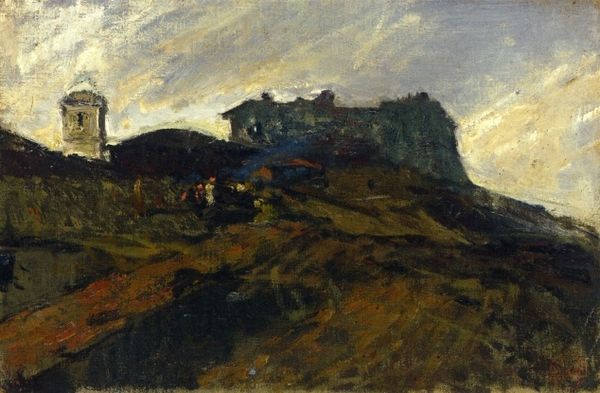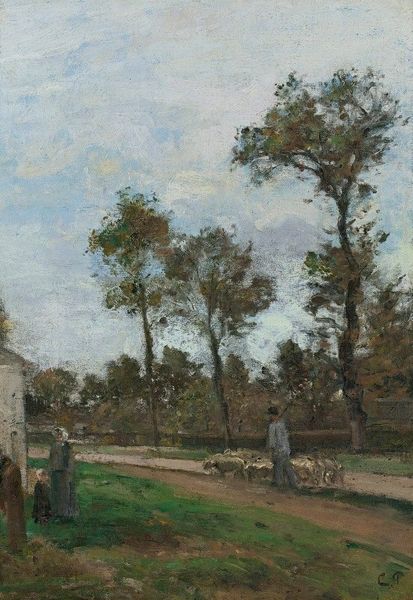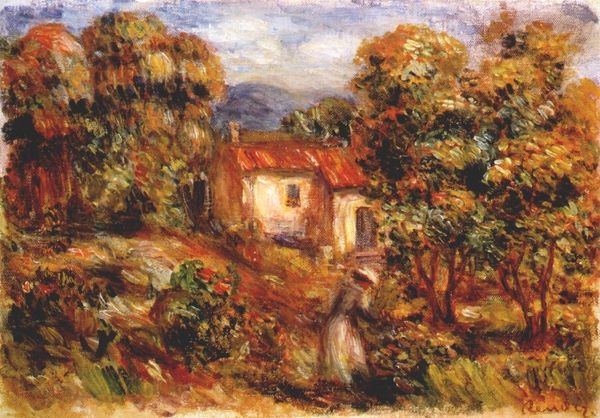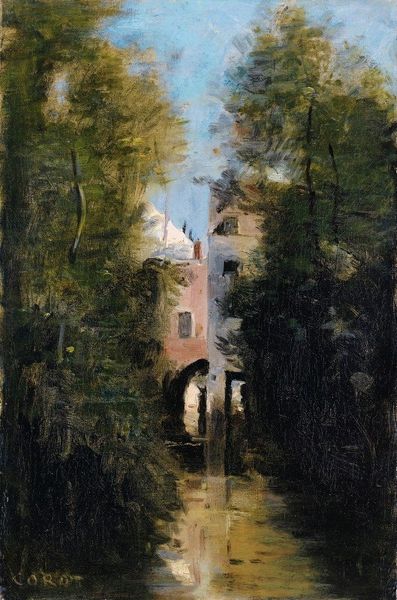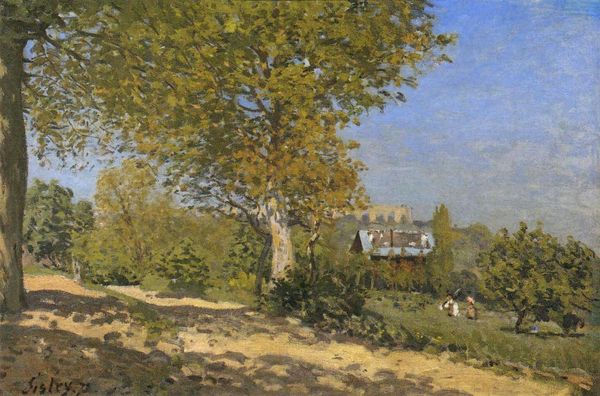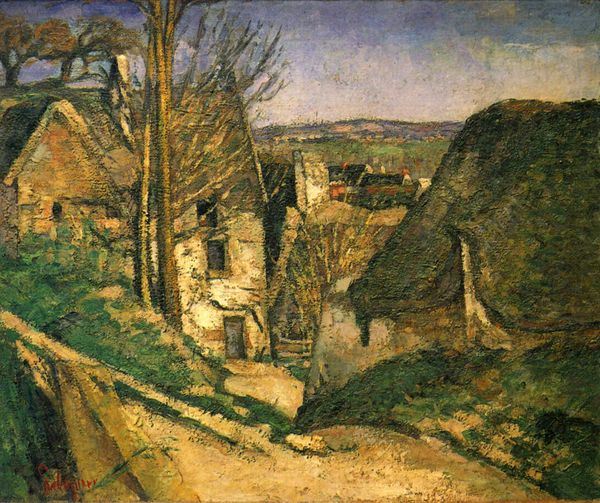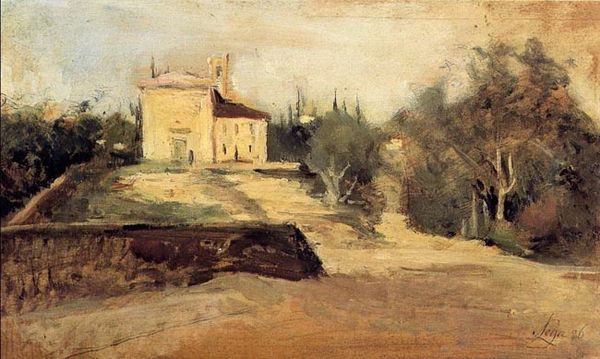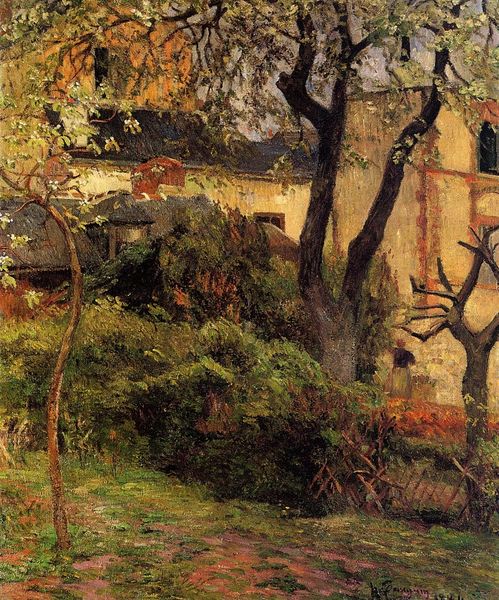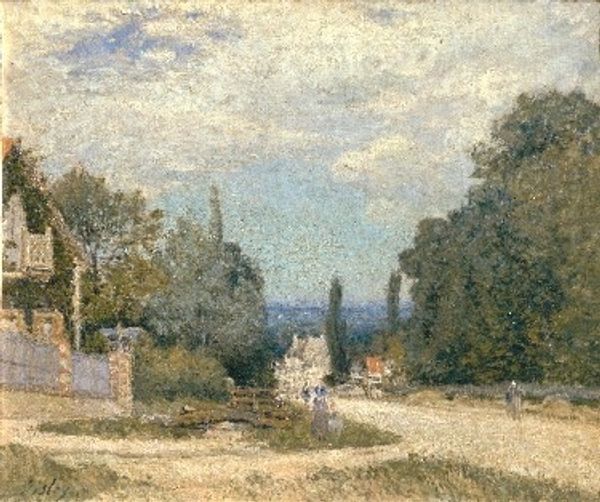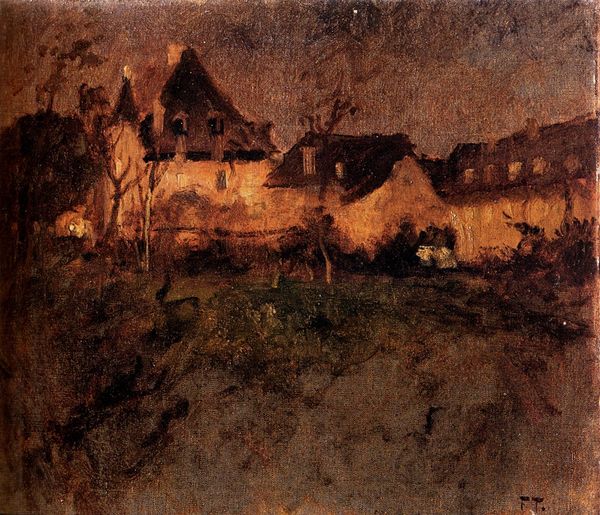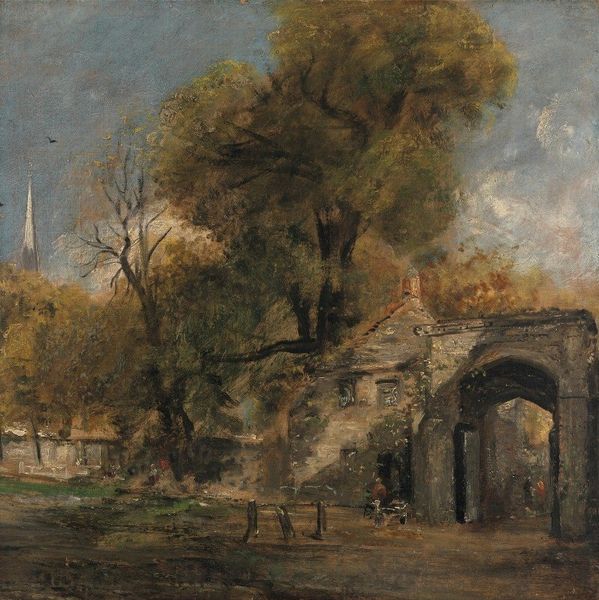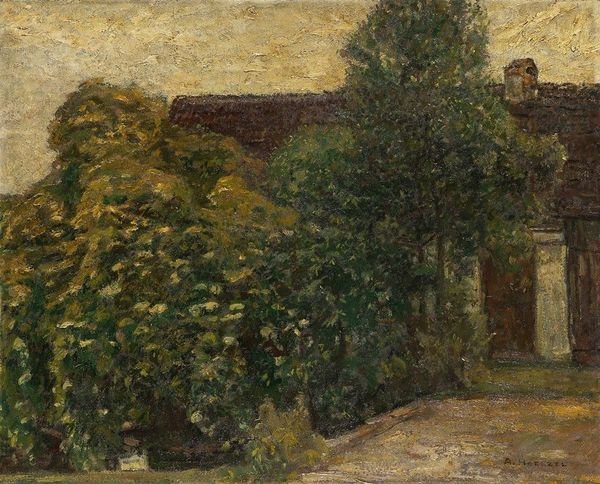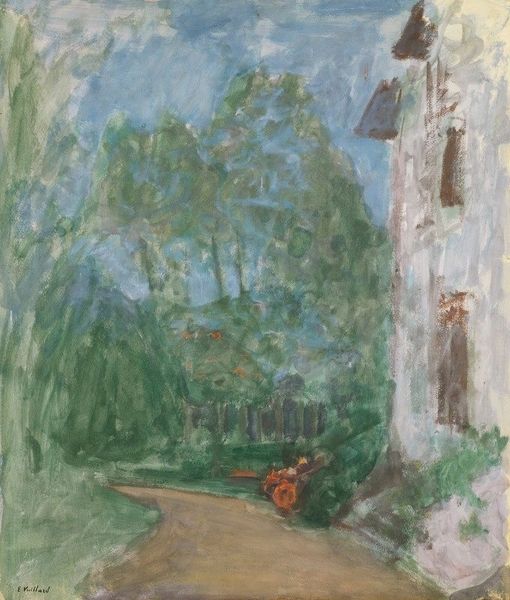
Copyright: Public domain
Curator: Here we have Richard Gerstl’s “Liechtenstein Palace,” created in 1907 using oil paints. It's quite a mysterious work, don't you think? Almost brooding in its application of color. Editor: Yes, it does have this air of something… almost withheld. I'm immediately drawn to the layering – look at the visible brushstrokes, especially in the sky. There's a raw, textural quality. Tell me, what kind of brushwork are we talking about here? What grade of canvas? What brand of pigments would an artist of Gerstl’s stature be buying back then? Curator: Those swirling clouds evoke a deep sense of melancholic foreboding, contrasted against this, as you say, almost crudely realized, built-up architecture. I feel an immense tension radiating from this… longing maybe? As if there's something he wants to escape. It almost trembles before our very eyes! Editor: Exactly, you know how to pick apart emotional textures from these paintings! It's true. These darker colors in the bushes surrounding this stately building suggest an interesting play between man-made luxury and the natural world which has yet to have its raw textures sanded and civilized. You can also observe his painting production in how thick and uneven some of those strokes of oil paint are – a world apart from some later, mass-producible acrylic and vinyl pigment paintings! Curator: This is also a time when Vienna was an extremely fascinating city: the twilight of empire. And Gerstl, one of the first Austrian Expressionists, stood as one of its more sensitive souls—feeling both inside and outside the grandeur. Editor: I find myself reflecting on the materiality of it all: from sourcing pigments to grinding and mixing, the physical demands must have profoundly impacted the texture. Today it can feel so antiseptic, acquiring pre-mixed color, and perfect canvas, off the shelf… Gerstl's materials, their labor… it all whispers to me from within this scene. Curator: Ultimately, this artwork conveys something very elemental and emotional through its handling of materials. Editor: Absolutely—a dialogue between intention and sheer physical existence in art. Thank you!
Comments
No comments
Be the first to comment and join the conversation on the ultimate creative platform.

